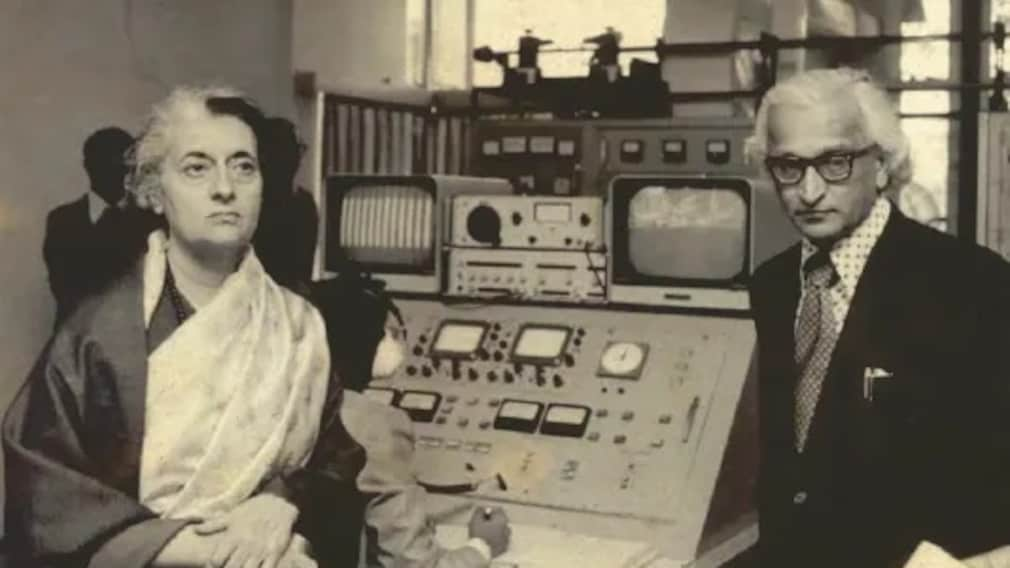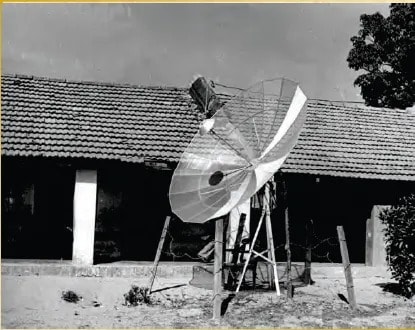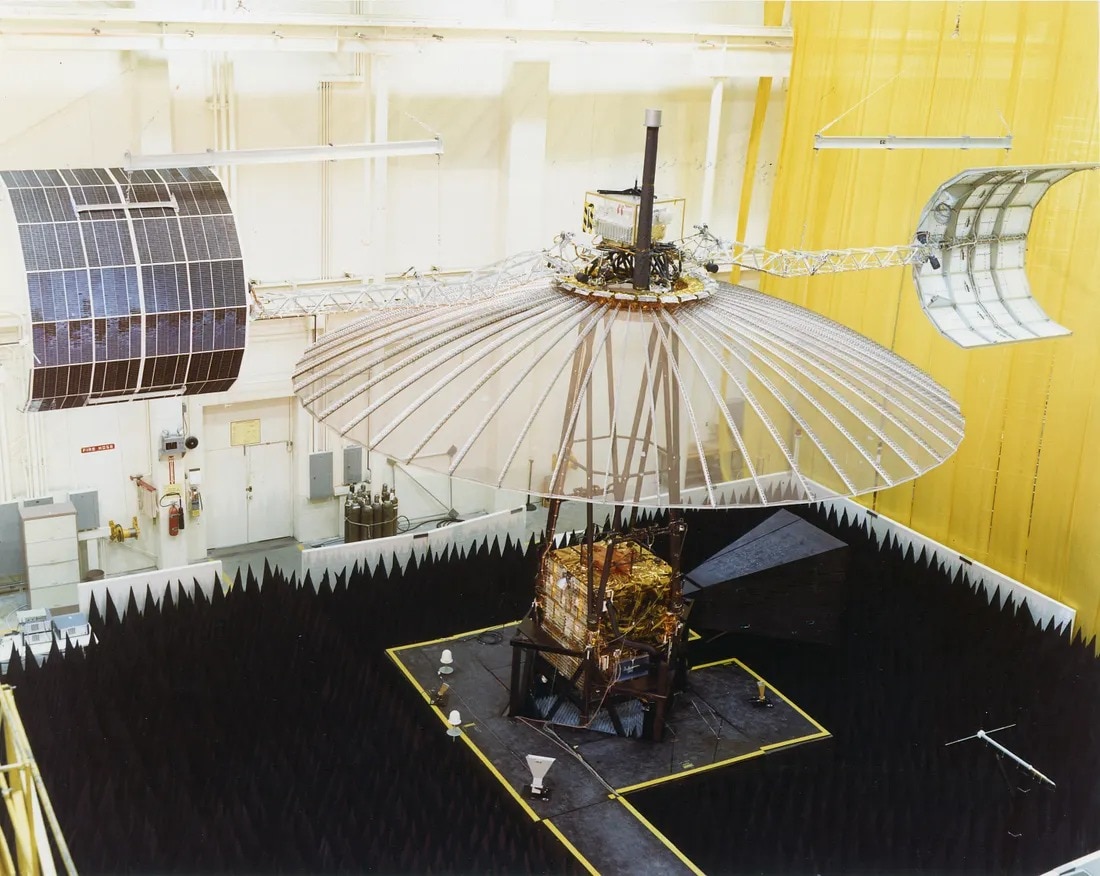From Cow Dung To Cosmos: How India Gave The World Direct-To-Home Television
A collaboration between ISRO and NASA, SITE not only revolutionised rural education but also laid the foundation for what the world now knows as direct-to-home (DTH) TV.

Fifty years ago, on August 1, 1975, India quietly launched one of the most transformative experiments in global communication history -- the Satellite Instructional Television Experiment, or SITE. A collaboration between the Indian Space Research Organisation (ISRO) and the American space agency NASA, SITE not only revolutionised rural education and development in India but also laid the foundation for what the world now knows as direct-to-home (DTH) television.
In an exclusive interview with NDTV, Dr Kiran Karnik, a key architect of SITE and later head of the Discovery India channel, reflected on the scale, ambition, and legacy of the experiment. "It was probably the most exciting phase of my career," he said. "And not just for me-many of us involved with SITE still say it was the most fulfilling and satisfying work we ever did."
A Satellite Umbrella In Space
SITE was powered by NASA's ATS-6 satellite, a technological marvel of its time. "It had a 30-foot diameter dish, something like what the NISAR satellite has," Dr Karnik explained. "You couldn't launch a 30-foot satellite directly, so they designed it like an umbrella-folded during launch and is deployed in space."

This innovation enabled the first-ever direct broadcasting from space. "In many ways, this was the precursor of what today you call DTH," Dr Karnik said. "The unique thing was, this was the first time for such an experiment anywhere in the world on this scale to take television programmes out to really remote areas."
Community Viewing In Remote Villages
SITE wasn't just about technology -- it was about impact. The experiment reached 2,400 villages across six Indian states, including Odisha and Bihar, where electricity was scarce and floods were frequent. "We ran the TV sets on batteries because there was no power," Dr Karnik recalled. "Some of our maintenance teams had to go via Nepal during the monsoons to reach the villages."
Despite the challenges, the uptime of these rural TV sets was better than urban ones. "Young engineers in their early 20s maintained these sets with such high motivation that our downtime was less than that of urban TV sets," he said.

The programming was tailored to local needs-agriculture, education, science, and development. "We had area-specific, language-specific content, and a national programme that was common across all regions," Dr Karnik noted.
"Head In The Stars, Feet In Cow Dung"
SITE was a paradoxical blend of cosmic ambition and grassroots reality. "I might summarise it as saying, common to me and many others in ISRO: head in the stars and cow dung on your feet," Dr Karnik quipped. "At one end, you're dreaming big things out in space. On the other, you're rooted in the reality of India."
The ground equipment was entirely designed and developed in India. "NASA provided the satellite, but the Earth stations, electronics, and 10-foot chicken mesh antennas were all made here," he said. "It was like a set-top box, but for community viewing."
Magic In The Eyes Of Children
The social impact of SITE was profound. "Most villagers had then never seen a moving picture," Dr Karnik said. "Suddenly, here was this box that began to deliver images. It was magic. The children were so taken with it, their eyes lit up with wonder."

This emotional connection drove the ISRO culture. "It gave us fulfilment and satisfaction. That's what motivated us," he said.
The Visionaries Behind SITE
Two names stand out in SITE's history: Professor Yashpal and Professor EV Chitnis. "Professor Yashpal was the director of the Space Applications Centre and truly a renaissance scientist," Dr Karnik said. "He brought in dramatists, artists, writers, creating a unique mix of technologists and creatives."
Professor Chitnis, was Dr Vikram Sarabhai's right-hand man, he was the programme manager. "He was the mentor and guide to our young, impatient team," Dr Karnik said. "Even today, at 100, he remains mentally active and remembers everything."
Kheda: Decentralisation In Action
Alongside SITE, ISRO launched the Kheda Experiment in Gujarat, focusing on decentralised rural broadcasting. "We set up a small TV transmitter in a village and worked with cooperatives," Dr Karnik said. "Villagers began making their own programmes. It was participative communication at its best."
Mr Kheda won UNESCO's prize and inspired the spread of low-powered TV transmitters across India. "At one time, Doordarshan was installing one a day," he said.
From SITE To Discovery
After SITE and the countrywide classroom programme, Karnik transitioned to Discovery India channel. "Discovery was focused only on documentaries-real-world entertainment," he said. "It was a challenge to prove that this genre could work in India."
Dr Karnik succeeded. "At the end of five years, National Geographic came in as a competitor. That meant we had created a market," he said.
India's Gift To The World
"The US did a technology demonstration, but the scale and application were unique to India," Dr Karnik said. "Arthur C Clarke the famous science fiction writer then called it the greatest communication experiment in history. Maybe a bit of hyperbole, but there's truth behind it."
SITE's legacy is undeniable. "It spurred the world to get direct-to-home television, starting from rural districts in India," Dr Karnik said. "We need to celebrate that."
The ISRO Ethos
SITE also shaped ISRO's philosophy. "Applications drove technology," Dr Karnik emphasised. "We didn't have satellites or rockets, so we borrowed them. But we built everything else ourselves."
He hopes ISRO continues this ethos. "No vanity projects, no competition for its own sake," he said. "Just competing to see what you can do for the people in this country." This was ISRO's philosophy and a huge legacy inculcated by Dr Sarabhai.
ISRO says Satellite Instructional Television Experiment (SITE), hailed as 'the largest sociological experiment in the world' during 1975-76. This experiment benefited around 200,000 people, covering 2400 villages of six states and transmitted development-oriented programmes using the American Technology Satellite (ATS-6). The credit of training 50,000 science teachers in primary schools in one year goes to SITE.'
A Legacy That Lives On
Today, millions of Indian homes rely on DTH television. Smartphones with satellite-to-phone connectivity are still on the horizon. But the roots of this revolution lie in a dusty villages in India, where a 10-foot dish and a battery-powered TV set brought the cosmos to the community.
"SITE was the catalyst that made ISRO what it is today," Dr Karnik said. This broadcast is what bridged India's digital divide, way back in 1975, well before the Internet became omnipresent.
-
Opinion | The Little-Known Story Of How Russia Gave Sonia Gandhi Her Name - And Changed Her Family's Fate
On Sonia Gandhi's 79th birthday, author Rasheed Kidwai throws light on her childhood, her father's years as a prisoner of war, and her early days in a little town in Italy.
-
Opinion | Invoked When Needed, Ignored When Not: How A New US Doctrine Sees India
Under the latest US National Security Strategy, India could become a convenience partner, invoked when useful and ignored when inconvenient. It can't accept that role.
-
Opinion | What The IndiGo Crisis Reveals About The Fragility Of Indian Aviation
The indelible images of passengers sleeping rough on cold terminal floors, captured and broadcast across every channel, will outlast a thousand corporate advertising campaigns by IndiGo. The urgent push for reform can no longer be ignored.
-
Opinion | IndiGo Crisis Is What Happens When Market Power Becomes Market Arrogance
IndiGo now is a de-facto monopoly in India's skies. And what comes with monopolies is conceit and extortion.
-
Opinion | Navigating the Tightrope: Why Putin's Visit Is A Masterclass In India's Foreign Policy
India's engagement with Russia is not without risks. Its decision to host the summit, nonetheless, and continue its trade ties despite overt disapproval from the West, is a clear exercise of strategic autonomy.
-
Opinion | Putin In India: Why A Fuming Europe Must Accept Its Problems Aren't Of India's Making
The initiative of the three European envoys to write an article in an Indian daily maligning Putin and Russia just before the Russian president's visit served no real purpose. It was diplomatically unwarranted.
-
Opinion | The Anti-Putin 'Op-ed': Why Europe Must Stop Lecturing India Like It's 1905
Europe has had it easy for centuries. Today, two non-European powers - the US and Russia - are deciding its fate. What really stings the old continent today is this acute feeling of impotency, a sense of irrelevance.
-
Opinion | India Still Needs Something Like Sanchar Saathi - Just Not Like This
India is experiencing what authorities describe as a "peak menace" of digital fraud. The Supreme Court recently took suo motu cognisance of digital arrest scams after victims collectively lost approximately Rs 3,000 crore.
-
Opinion | Sanchar Saathi Mess: 5 Lessons From The Centre's Spectacular Misfire
It's worrying that nobody in authority had the brains to anticipate the outrage that has dominated the public discourse in the last two days. In a way, the government has brought this blowback upon itself.
-
Opinion | Guns To Rallies, How 'Drug Money' Is Fuelling Khalistani Extremism In Canada
Since 2007, more than 200 gang-related homicides in British Columbia alone have been linked to rival Punjabi-Canadian gangs fighting for control of the lucrative cross-border drug trade
-
News Updates
-
Featured
-
More Links
-
Follow Us On










